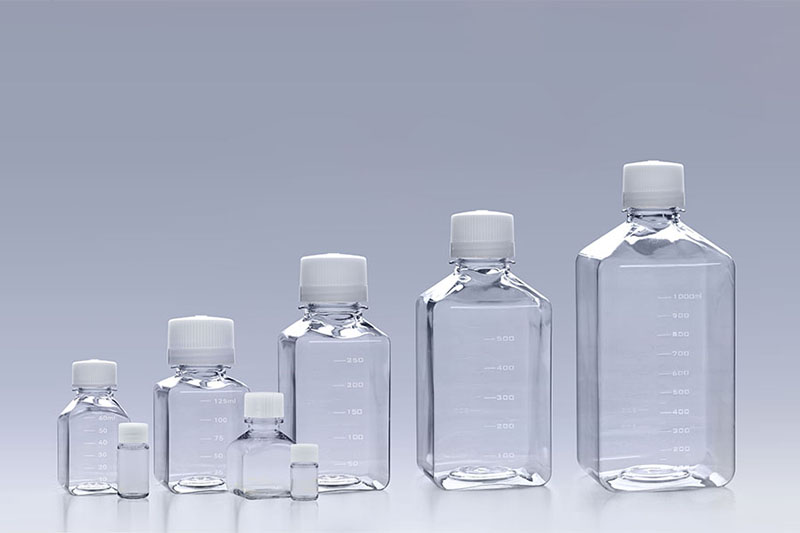In the field of cell culture consumables, choosing the right type of bottle for storing and handling media is crucial. Two common options are PETG (Polyethylene Terephthalate Glycol) media bottles and glass media bottles. This article aims to provide a comparative analysis of these two choices, focusing on the advantages of PETG media bottles, our core product.
1.Material Differences:
PETG Media Bottles:
PETG is a type of plastic known for its durability, chemical resistance, and transparency. PETG media bottles are lightweight and shatterproof, making them an excellent choice for shipping and handling. They also have excellent gas barrier properties, reducing the risk of contamination.
Glass Media Bottles:
Glass media bottles are known for their traditional appearance and the ability to maintain the integrity of the stored contents. However, they are fragile and prone to breakage, which can lead to safety hazards and contamination concerns.
2.Impact on Cell Culture:
PETG Media Bottles:
PETG media bottles offer a stable and controlled environment for cell culture. They are free from potential contaminants introduced by glass breakage and are easy to handle. Their transparency allows for easy monitoring of the media inside.
Glass Media Bottles:
While glass bottles are inert and do not leach chemicals into the media, they pose a higher risk of contamination due to breakage. Glass can also create glare, making it challenging to observe the contents accurately.
3.Versatility and Application:
PETG Media Bottles:
PETG media bottles are versatile and suitable for a wide range of applications, including biotechnology, pharmaceuticals, and research. Their lightweight nature makes them ideal for transport and storage.
Glass Media Bottles:
Glass Media bottles are typically used in laboratory settings where the risk of breakage is lower. They are less suited for transport and may not be the best choice for field applications.
In the world of cell culture consumables, PETG media bottles offer distinct advantages over traditional glass media bottles. Their durability, chemical resistance, and lightweight design make them a top choice for various applications, ensuring a safer and more efficient cell culture process.
At FuDau Bio, we are committed to providing high-quality PETG media bottles that meet the demands of modern laboratory practices, making them an ideal choice for researchers and professionals.Invest in the future of cell culture with PETG media bottles from FuDau Bio.
The FAI climbed 5.9 percent year-on-year in the first 11 months of 2018, quickening from the 5.7-percent growth in Jan-Oct, the National Bureau of Statistics (NBS) said Friday in an online statement.
The key indicator of investment, dubbed a major growth driver, hit the bottom in August and has since started to rebound steadily.
In the face of emerging economic challenges home and abroad, China has stepped up efforts to stabilize investment, in particular rolling out measures to motivate private investors and channel funds into infrastructure.
Friday's data showed private investment, accounting for more than 60 percent of the total FAI, expanded by a brisk 8.7 percent.
NBS spokesperson Mao Shengyong said funds into weak economic links registered rapid increases as investment in environmental protection and agriculture jumped 42 percent and 12.5 percent respectively, much faster than the average.
In breakdown, investment in high-tech and equipment manufacturing remained vigorous with 16.1-percent and 11.6-percent increases respectively in the first 11 months. Infrastructure investment gained 3.7 percent, staying flat. Investment in property development rose 9.7 percent, also unchanged.
 English
English



















































 PETG Media Bottles
PETG Media Bottles